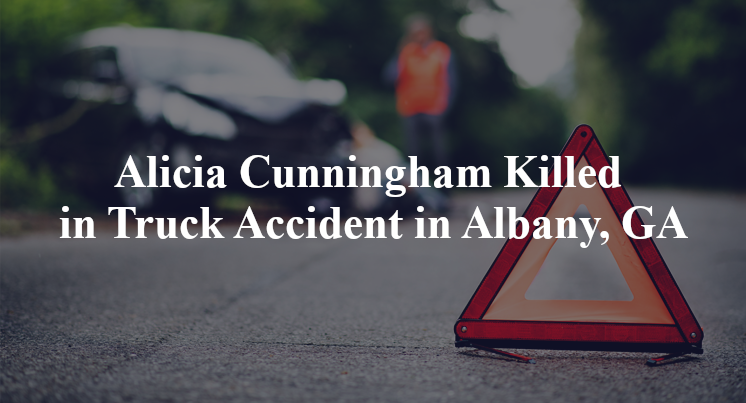Alicia Cunningham Killed in Truck Accident in Albany, GA
Albany, GA — May 21, 2025, Alicia Cunningham was killed in a truck accident at about 9:10 a.m. on Liberty Expressway/U.S. Route 19.
Authorities said a 2025 Toyota Corolla was trying to cross the highway on Nelms Road when it was hit by a dump truck.

Toyota driver Alicia Cunningham, 20, died in the crash, according to authorities.
No other injuries were reported.
Authorities have not released any additional information about the Dougherty County crash at this time. The accident is still under investigation.
Commentary
When people hear about a deadly collision between a car and a dump truck, their first question is usually some version of: How does something like this happen? That’s the right question to ask, but it’s one the current reports don’t yet answer.
Authorities say a Toyota Corolla was trying to cross U.S. Route 19 from Nelms Road when a dump truck hit it. Beyond that basic outline, there’s no real explanation yet of who had the right of way, what either driver could see or what steps, if any, were taken to avoid the crash.
Was the dump truck traveling at highway speeds? Did it have time to brake or swerve? Was the car creeping forward or did it pull out suddenly? These questions may sound like details, but they’re critical for understanding how the crash happened and who may bear legal responsibility.
More importantly, we don’t yet know if any physical or digital evidence has been collected. Modern dump trucks are often equipped with engine control modules (ECMs), which log key data like speed, throttle position and brake use. If this truck had an ECM, it could confirm whether the driver was maintaining a safe speed and whether he reacted in time.
In-cab cameras. if present, could also offer a first-person view of what the driver saw in the moments before the crash. Cell phone records might tell us whether he was distracted. These are not theoretical concerns. I’ve worked cases where ECM data and dashcam footage made the difference between guessing what happened and knowing for sure.
On the other side of the equation, it’s also unclear what visibility was like for the Toyota driver. Was there a blind curve or obstruction at the intersection? Were traffic controls in place, or missing? Without a scene reconstruction or witness accounts, we’re left with a lot of unanswered questions.
If it turns out that the dump truck driver was at fault, it’s not enough to stop there. A thorough investigation should also look into the company that owns the truck. Were its hiring practices solid? Did it train the driver properly? Was the truck maintained according to safety standards?
I once handled a case where a trucking company’s entire driver evaluation process boiled down to a 20-minute drive in good weather. When you see patterns like that, it’s not just about one bad driver; it’s about a system that sets people up to fail.
Key Takeaways
- It’s unclear from current reports which vehicle had the right of way or what caused the collision.
- Crucial evidence like ECM data, dashcam footage and phone records could help clarify the dump truck driver’s actions.
- Visibility, signage and road design at the intersection may be key factors in understanding the Toyota driver’s decision.
- If the dump truck driver was at fault, the role of the trucking company, including its hiring and training practices, should be closely examined.
- Getting the full picture requires more than a police report; it demands a detailed, independent investigation.

“These are essential reads for anyone dealing with the aftermath of a truck wreck”– Attorney Cory Carlson